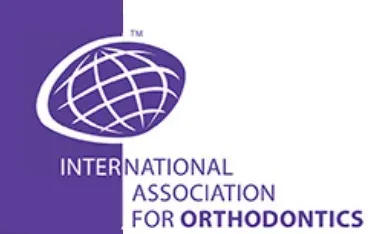February’s Tip

Peripherals in Straight Wire System Back to Basics Part I
By Dr. Adrian J. Palencar, MUDr, MAGD, IBO, FADI, FPFA, FICD
February 2022
Peripherals (definition): relating to, involving, affecting, or forming the periphery or surface part. In short, every item which is tied (placed) on the arch wire (or on the tooth), before or after it is inserted into the bracket slot.
Peripherals may be fabricated from elastomer (polymer) material, artificial rubber, stainless steel, nickel titanium and other esoteric materials. Examples: elastomeric ligature ties, elastomeric chain, elastic tube, elastic thread, tissue guard, separator, rotation wedge, ligature tie, Kobayashi ligature tie, closing coil spring, open coil spring, closed coil spring and torqueing spring. The author will analyse the Elastomeric Ligature Tie in this IAO Monthly Tip.
Elastomeric Ligature Ties
Elastomeric Ligature Tie (Safe-T-Tie, doughnuts) is the most common method of tying the arch wire to the twin (Siamese) bracket. However, there is a lack of efficiency, because they increase the friction, binding, absorb saliva, stain, attract plaque and undergo rapid degradation. Elastomeric Ligature Ties are easy to place, they are very attractive and thus desirable for the patients. For twin brackets, dead soft stainless steel Ligature Ties are the most efficient (less friction, binding) and are more hygienic. However, they are not desirable by the patients and are more time consuming to place.
Elastomeric Ligature Ties are available in diameters 0.110”, 0.120” and 0.150.” Also, they come in long sticks (24 ties), short sticks (11 ties), rings (100 ties) and pre-loaded canes (50 ties). The patient may choose from black, grey, white, clear, and 16 other colours. The author prefers dispensing the Elastomeric Ligature Ties from latex-free short stick (no need to sterilize), in a diameter 0.120”.

Application of Elastomeric Ligature Ties on Twin brackets:
- Figure “O” – this application is least retentive, with less friction. This configuration is favourable, when the translation is desired
- Figure “8” – this application is most retentive, with more friction. This configuration is most desirable if teeth are already in final position, or they represent tooth mass anchorage. It is advisable slightly pre-stretch the elastomeric ligature tie for ease of placement.
- Double tie – two separate elastomeric ties, one on the mesial and one on the distal tie wing. This configuration is desirable when the tooth is rotated moderately. However, the most efficient mean for moderately rotated (misaligned) tooth is stainless steel .010 ligature tie or double tie on a .012 or a .014 Cu Nitanium arch wire.

Application of Elastomeric Ligature Ties on Self-ligating brackets:
Placement of Elastomeric ligature ties on self-ligating brackets is not recommended, as it defeats their function (low force – low friction). The analogy is to press on the break and gas pedal on the automobile, simultaneously. The younger patients desire colour options. Therefore, if the orthodontic clinician is coerced, the author recommends placing two elastomeric ligature ties, only on maxillary anterior teeth, under the arch wire.

References:
- Rondeau Seminars, Level I, Session 2; 117-118
- Cerum Ortho Organizers Catalogue, 164
<
HABLA ESPAÑOL
PARLE FRANÇAIS
